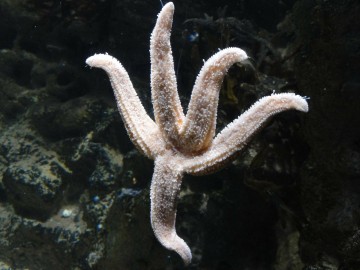“Incorporating webcam images into a curriculum expands the tools educators have to help explain ideas and concepts to students. Webcams can be used as a teaching tool, with images and data from the webcam sites incorporated into a teaching module, emphasizing a concept or point. Webcams can also be used in an exercise, where students find webcams from different parts of the world that fulfill a set of criteria set by the educator.”
(Sawyer, Butler & Curtis, 2010)
There has been a great deal of research on the value of connecting students to the natural world. The BCEd plan advocates experiential learning and many publications expound the impact of time spent in nature on the health and well-being of both children and adults. While taking students outdoors as often as possible is inarguably the most valuable form of field experience, webcams and Virtual Field Experiences can provide an alternative when this is not possible. Webcams can also be used to supplement an ‘actual’ field trip and support ‘real time’ data collection in the classroom prior to, following or in lieu of a field experience; to pre-play or re-play the opportunity.
For many teachers, taking students outside of the immediate local environment is difficult if not impossible. While many recognize the value in even accessing natural areas if they exist within walking distance of the school, field experiences (even a walk down the block) can pose barriers to teachers (geography, safety, scheduling, financial issues, permissions and district or school policies to name a few). Virtual experiences like webcams (or interaction with experts via web conferencing as a virtual field trip or even via social media), can eliminate these barriers and the instantaneous, multi-modal nature of the interaction helps to make the experience particularly relevant to learners today (Prensky, 2001).
Having students interact with natural environments and people via webcam allows students to see beyond the school walls even when they are confined by those walls. Real-world experiences, even those mediated by digital technologies such as web-cams, increase student motivation, engagement and learning at all grade levels (NREL, 2005). Further, while being immersed in natural environments is superior, simply viewing nature in images or video can improve mood and lessen anxiety (Louv, 2008).
While the concept of viewing nature videos or participating in virtual field trips is not new to teachers, the increase in number and quality of live streaming webcams combined with increased access to technology in schools, make the potential for this sort of observation more accessible.
There are so many potential uses for Webcams & virtual tours in the classroom. From geography to science to critical thinking, storytelling, problem solving and observation. From whole class engagement, to small group, to individual and even ‘passive’ observation where the ‘cam’ is left live on the projector for students to observe as desired or as needed. Webcams can be part of a learning center or approach along with hands-on manipulatives, magnifiers, measuring tools, books, writing and drawing materials.
Download a Sandbox_WebCams_handout
In this edutopia Article, learn how Webcams can “bring lessons to life”
http://www.educationworld.com/a_tech/tech/tech100.shtml
 A favourite experience with my own students was a unit exploring extreme environments. We connected with Ocean Networks Canada, http://www.oceannetworks.ca/, viewed their webcams, collected data and then participated in a ship to shore Skype with an educator aboard a research vessel 100’s of KM off the coast of BC. The students were highly engaged, developed excellent questions for inquiry and did some very creative problem solving – areas each of the core competencies were easily explored in this one unit! Communication, Thinking and Personal Social.
A favourite experience with my own students was a unit exploring extreme environments. We connected with Ocean Networks Canada, http://www.oceannetworks.ca/, viewed their webcams, collected data and then participated in a ship to shore Skype with an educator aboard a research vessel 100’s of KM off the coast of BC. The students were highly engaged, developed excellent questions for inquiry and did some very creative problem solving – areas each of the core competencies were easily explored in this one unit! Communication, Thinking and Personal Social.
The Vancouver Aquarium has a variety of webcams and teaching resources at vanaqua.org. They also offer Virtual Field Trips (Free in the pilot year with a fee of approx. $60 per class of any size beginning in Sept. 2019) Contact: https://www.vanaqua.org/education/school-programs/virtual-aquaclass (and let them know you heard about these experiences via UBC’s Faculty of Education Scarfe Sandbox)
A few Tips
- Know your objectives!
- Pre-view and pre-test the webcam
- Have a back up plan – what will you do if the webcam isn’t active or internet is too slow (have students engage in something related – having a ‘sketch journal’ can support effective use of downtime!)
- Ensure your display is clear and large enough – is there sound?
- Have students develop questions prior to watching, while they watch or after watching. Can we ‘answer’ our questions (i.e. research) by observing?
Additional Resources:
- Skype in the classroom: Virtual Field trips and Mystery Skype
- Google TREKS (maps)
- Discovery Education
- Discovery VR Youtube
- Google Tour Creator – why not create your own virtual field trip or have students create theirs?!
- PenPal Schools – excellent inquiry oriented activities connecting your classroom with another
References:
Butler, D., Curtis, M., & Sawyer, C. (2010). Using webcams to show change and movement in the physical environment. Journal of Geography, 109(6), 251-263. doi:10.1080/00221341.2010.506924
Louv, R. (2008). Last child in the woods : Saving our children from nature-deficit disorder. Chapel Hill, N.C: Algonquin Books of Chapel Hill.
Northwest Regional Educational Laboratory, (2005) Focus on Effectiveness. Retrieved from http://www.netc.org/focus/challenges/student.php
Prensky, M. (2001). “Digital Natives, Digital Immigrants”. On the Horizon 9 (5). Lincoln: NCB University Press.

